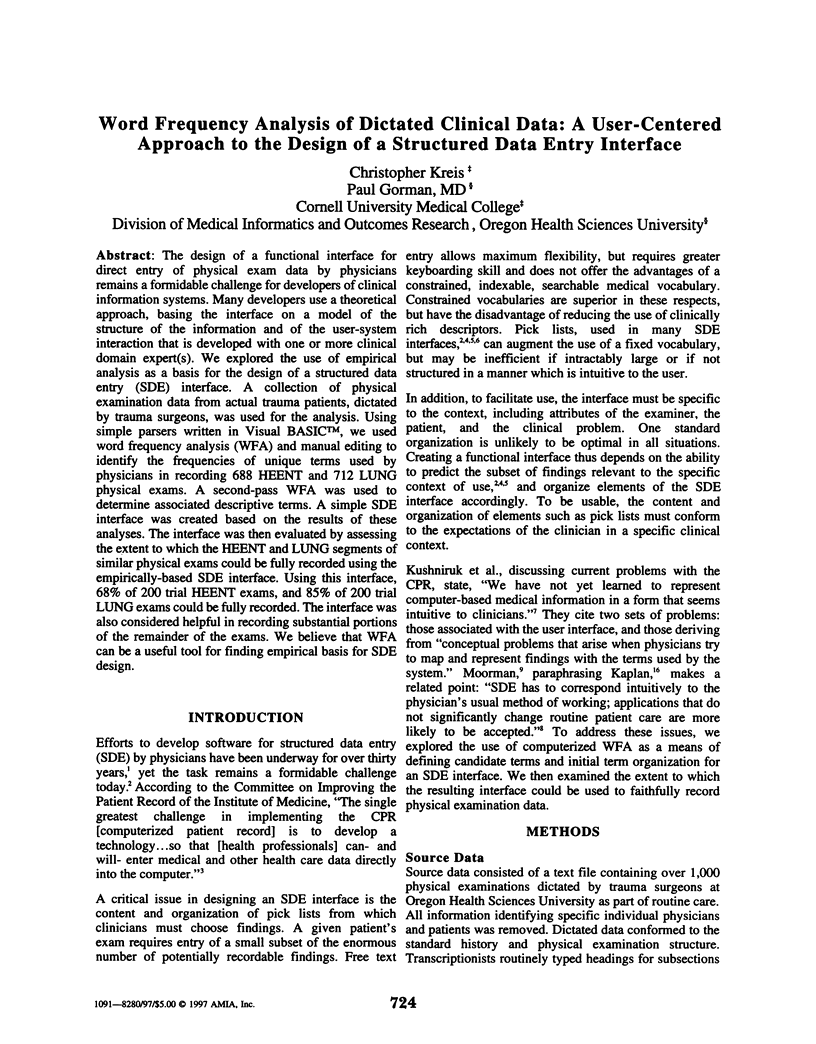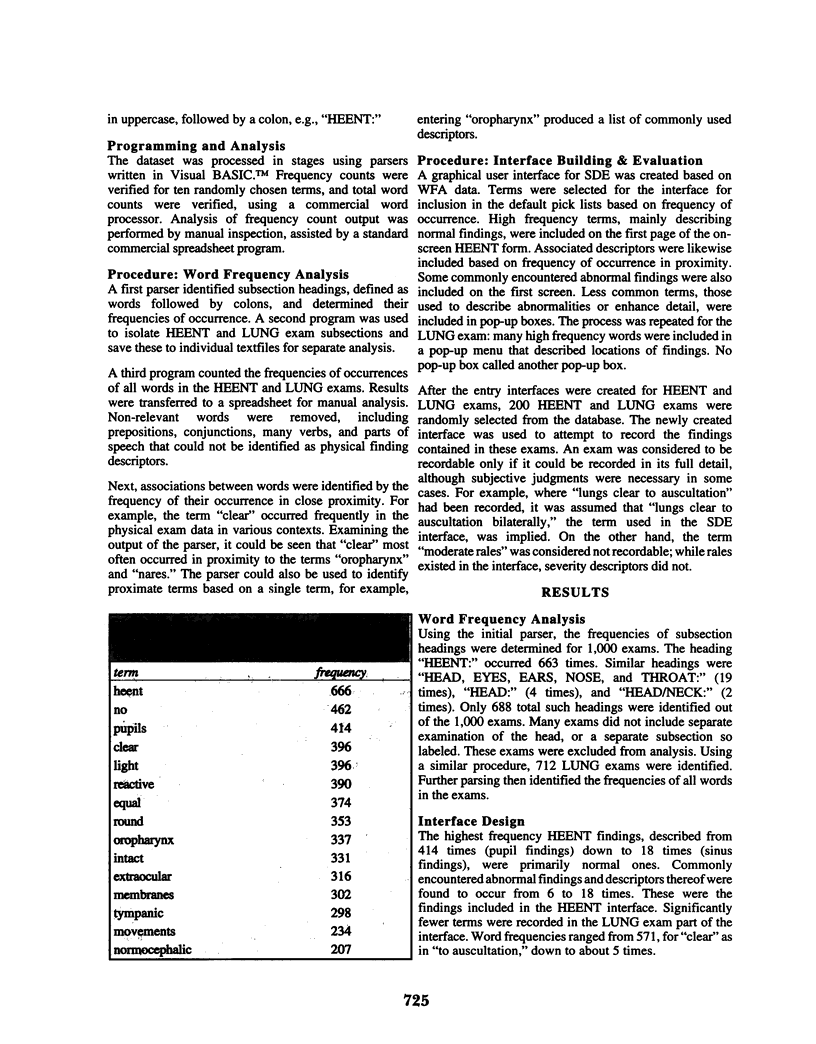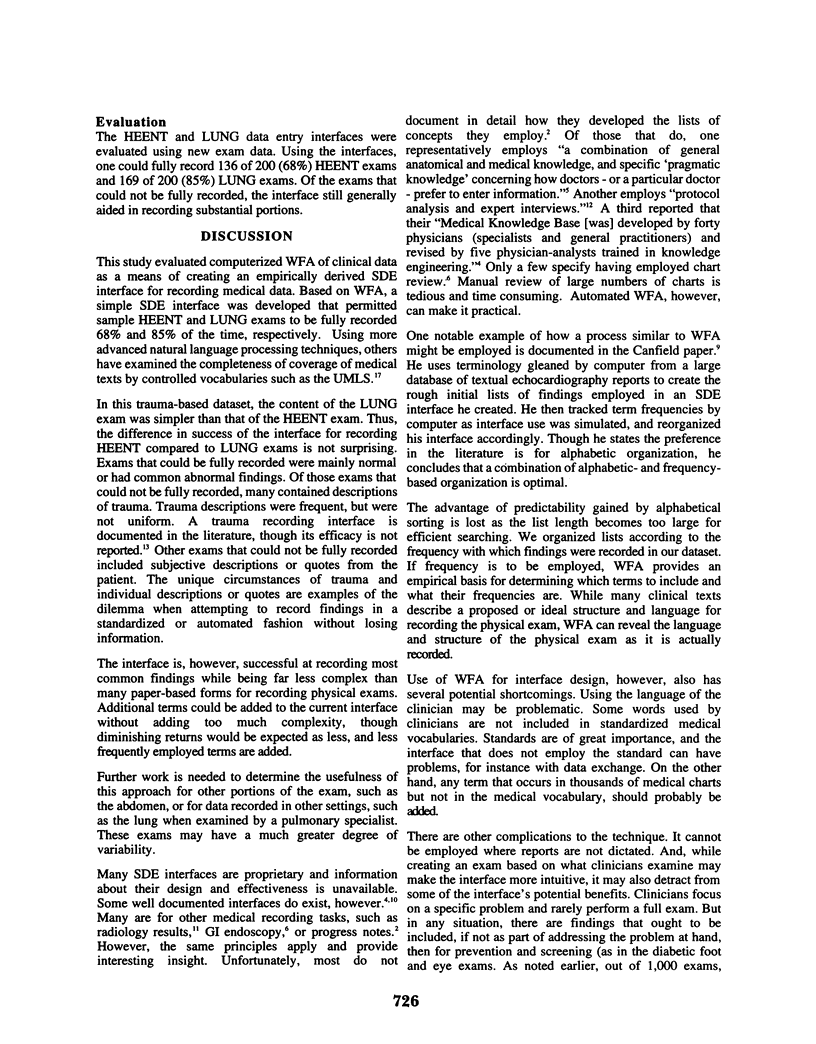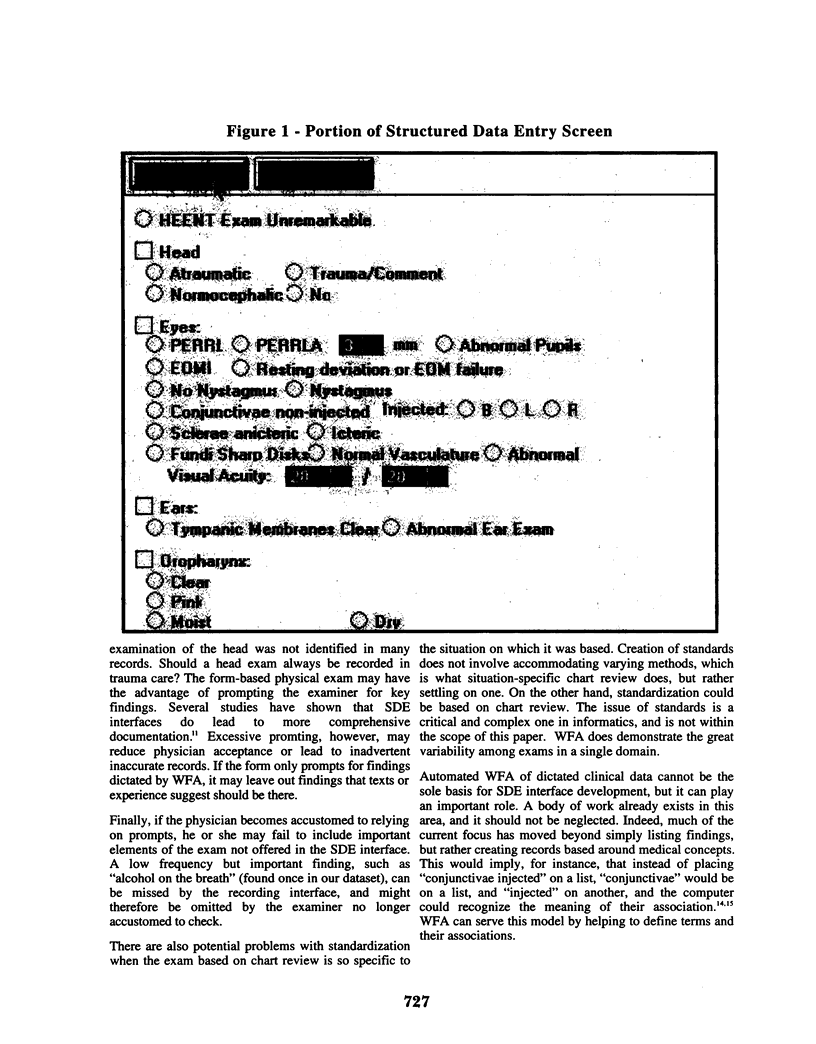Abstract
The design of a functional interface for direct entry of physical exam data by physicians remains a formidable challenge for developers of clinical information systems. Many developers use a theoretical approach, basing the interface on a model of the structure of the information and of the user-system interaction that is developed with one or more clinical domain expert(s). We explored the use of empirical analysis as a basis for the design of a structured data entry (SDE) interface. A collection of physical examination data from actual trauma patients, dictated by trauma surgeons, was used for the analysis. Using simple parsers written in Visual BASIC, we used word frequency analysis (WFA) and manual editing to identify the frequencies of unique terms used by physicians in recording 688 HEENT and 712 LUNG physical exams. A second-pass WFA was used to determine associated descriptive terms. A simple SDE interface was created based on the results of these analyses. The interface was then evaluated by assessing the extent to which the HEENT and LUNG segments of similar physical exams could be fully recorded using the empirically-based SDE interface. Using this interface, 68% of 200 trial HEENT exams, and 85% of 200 trial LUNG exams could be fully recorded. The interface was also considered helpful in recording substantial portions of the remainder of the exams. We believe that WFA can be a useful tool for finding empirical basis for SDE design.
Full text
PDF




Selected References
These references are in PubMed. This may not be the complete list of references from this article.
- Bell D. S., Greenes R. A., Doubilet P. Form-based clinical input from a structured vocabulary: initial application in ultrasound reporting. Proc Annu Symp Comput Appl Med Care. 1992:789–790. [PMC free article] [PubMed] [Google Scholar]
- Benoit R. G., Cushing B. M., Teitelbaum S. D., van Wijngaarden M. H., Canfield K. Direct physician entry of injury information and automated coding via a graphical user interface. Proc Annu Symp Comput Appl Med Care. 1992:787–788. [PMC free article] [PubMed] [Google Scholar]
- Bernauer J., Gumrich K., Kutz S., Lindner P., Pretschner D. P. An interactive report generator for bone scan studies. Proc Annu Symp Comput Appl Med Care. 1991:858–860. [PMC free article] [PubMed] [Google Scholar]
- Canfield K. Priming intelligent split menus with text corpora for computerized patient record data-entry. Int J Biomed Comput. 1995 May;39(2):263–273. doi: 10.1016/0020-7101(95)01108-q. [DOI] [PubMed] [Google Scholar]
- Evans D. A., Cimino J. J., Hersh W. R., Huff S. M., Bell D. S. Toward a medical-concept representation language. The Canon Group. J Am Med Inform Assoc. 1994 May-Jun;1(3):207–217. doi: 10.1136/jamia.1994.95236153. [DOI] [PMC free article] [PubMed] [Google Scholar]
- Gouveia-Oliveira A., Salgado N. C., Azevedo A. P., Lopes L., Raposo V. D., Almeida I., de Melo F. G. A unified approach to the design of clinical reporting systems. Methods Inf Med. 1994 Dec;33(5):479–487. [PubMed] [Google Scholar]
- Hersh W. R., Campbell E. H., Evans D. A., Brownlow N. D. Empirical, automated vocabulary discovery using large text corpora and advanced natural language processing tools. Proc AMIA Annu Fall Symp. 1996:159–163. [PMC free article] [PubMed] [Google Scholar]
- Kushniruk A. W., Kaufman D. R., Patel V. L., Lévesque Y., Lottin P. Assessment of a computerized patient record system: a cognitive approach to evaluating medical technology. MD Comput. 1996 Sep-Oct;13(5):406–415. [PubMed] [Google Scholar]
- Lussier Y. A., Maksud M., Desruisseaux B., Yale P. P., St-Arneault R. PureMD: a Computerized Patient Record software for direct data entry by physicians using a keyboard-free pen-based portable computer. Proc Annu Symp Comput Appl Med Care. 1992:261–264. [PMC free article] [PubMed] [Google Scholar]
- Naeymi-Rad F., Almeida F. D., Trace D. IMR-entry (Intelligent Medical Record-Entry). Proc Annu Symp Comput Appl Med Care. 1992:783–784. [PMC free article] [PubMed] [Google Scholar]
- Poon A. D., Fagan L. M., Shortliffe E. H. The PEN-Ivory project: exploring user-interface design for the selection of items from large controlled vocabularies of medicine. J Am Med Inform Assoc. 1996 Mar-Apr;3(2):168–183. doi: 10.1136/jamia.1996.96236285. [DOI] [PMC free article] [PubMed] [Google Scholar]
- Rector A. L., Glowinski A. J., Nowlan W. A., Rossi-Mori A. Medical-concept models and medical records: an approach based on GALEN and PEN&PAD. J Am Med Inform Assoc. 1995 Jan-Feb;2(1):19–35. doi: 10.1136/jamia.1995.95202545. [DOI] [PMC free article] [PubMed] [Google Scholar]


